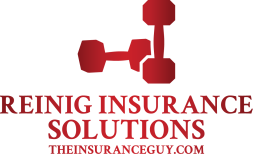There is a misconception in the health club industry surrounding the overall safety of 24 hour “key access” clubs. As a 25 year insurance specialist in the health and fitness business, I would like to set the record straight as to the claims experience and risk management history of these key access facilities and particularly the safety record of Anytime Fitness.
Although many people may want to jump to the conclusion that a facility that is un-staffed during certain hours of the day or night poses an increased exposure to injury or safety of the patrons, our data suggests quite the opposite. Although I can only speak to the claims experience and safety issues surrounding the Anytime Fitness franchisees, it is safe to assume that similar claims experience would translate to other 24/7 type of facilities as long as these clubs have similar protocols , equipment, and risk management procedures.
The following points will hopefully explain the reasoning behind the safety success of Anytime Fitness.
- Member Orientation / Assumption of Risk: Since a member is knowingly joining a club that is likely to be un-staffed when they are working out, the member is aware they are definitely entering at their own risk. In other words, the members themselves already have a mindset that holds themselves accountable for their own actions while at the gym. Individuals, who understand the term “accountability”, are generally less likely to call an attorney if they injure themselves during their workout or accidentally fall off a treadmill.
- Digital Surveillance System/Limited Key Access: Cameras are positioned throughout the club that can track the activity of every member from the time they enter the gym until the time they leave. Members must have an active key fob or card to obtain access and they know that they are being watched. This helps eliminate unwanted guests or members who “lend” their cards to their friends. If the card doesn’t match the face, it is grounds for termination of the membership. The fear of a stalker hanging out waiting to attack a female member when she is all alone at the club just doesn’t hold water. There is just too much surveillance. Furthermore, digital surveillance also reduces the amount “phantom” claims and fraud.
- Limited wet areas: Unlike most full service health clubs, facilities like Anytime Fitness have very limited slip and fall exposure. No saunas, no steam rooms, and limited showers all translate into a safer premises liability environment.
- Safer equipment: You won’t find any 80lbs. dumb bells or antiquated gym rat weight benches at an Anytime Fitness club. If the exercise requires a spotter, you better join another gym. This alone reduces the severity of injuries that often occur when members attempt maximum weight.
- We have been able to track the claims activity for the Anytime Fitness franchisees for several years now and we are happy to report that claim frequency and claim severity are both extremely low. Our company has been insuring health clubs since 1995 and we currently insure over 1,000 Anytime Fitness facilities and over 3,000 other types of health clubs. The actual claim history experience for Anytime Fitness for the period of Jan, 2008 through Jan, 2012 is running a full 50% less than the rest of the health clubs that we insure.
I would be happy to discuss and/or address any issue involving the safety of the health club industry and specifically the experience surrounding 24/7 key access clubs.
I have authored several articles on risk management for the health club industry and wrote the Club Safety Risk Management Manual that have been used by over 10,000 health clubs nationwide.
Ken M. Reinig

